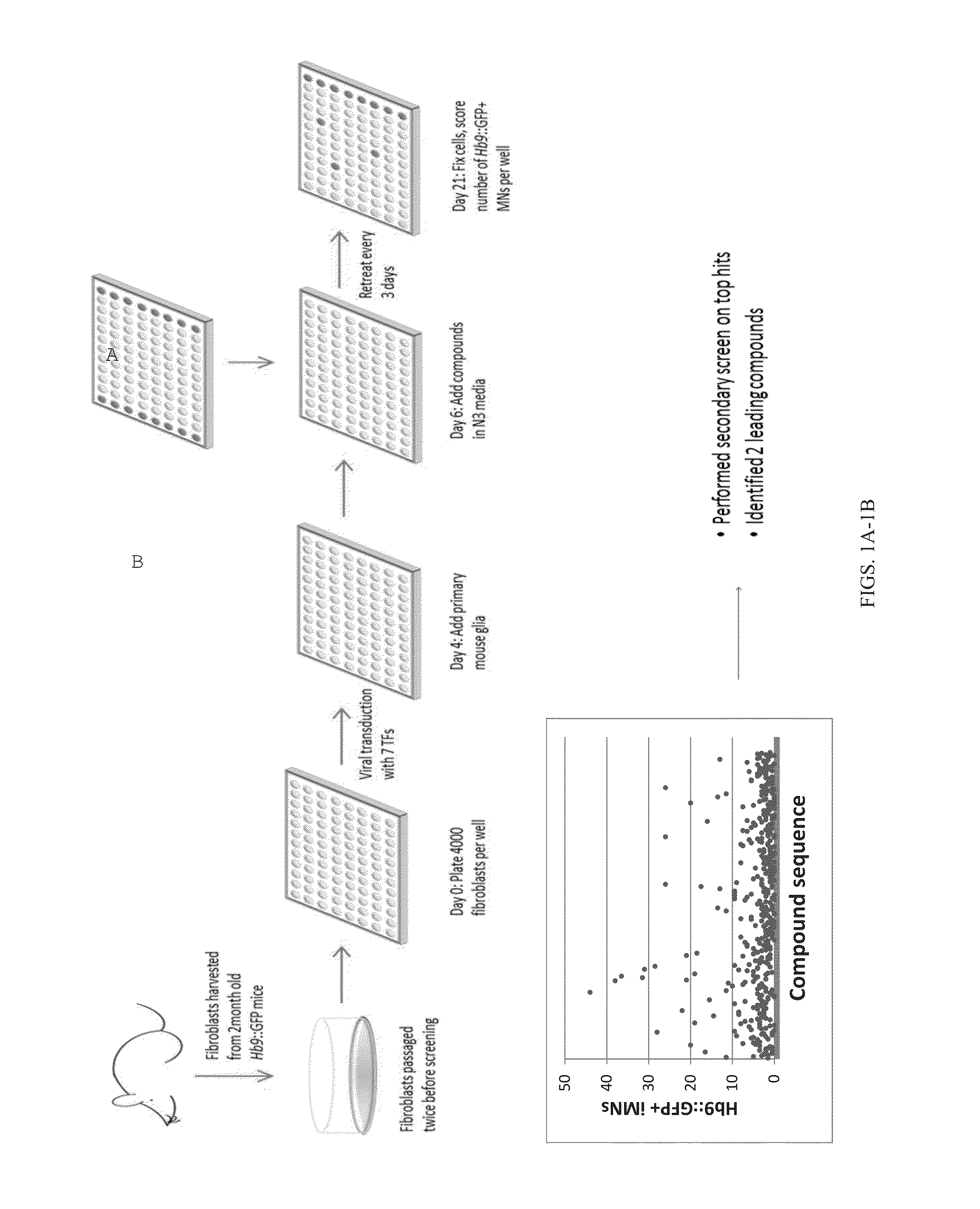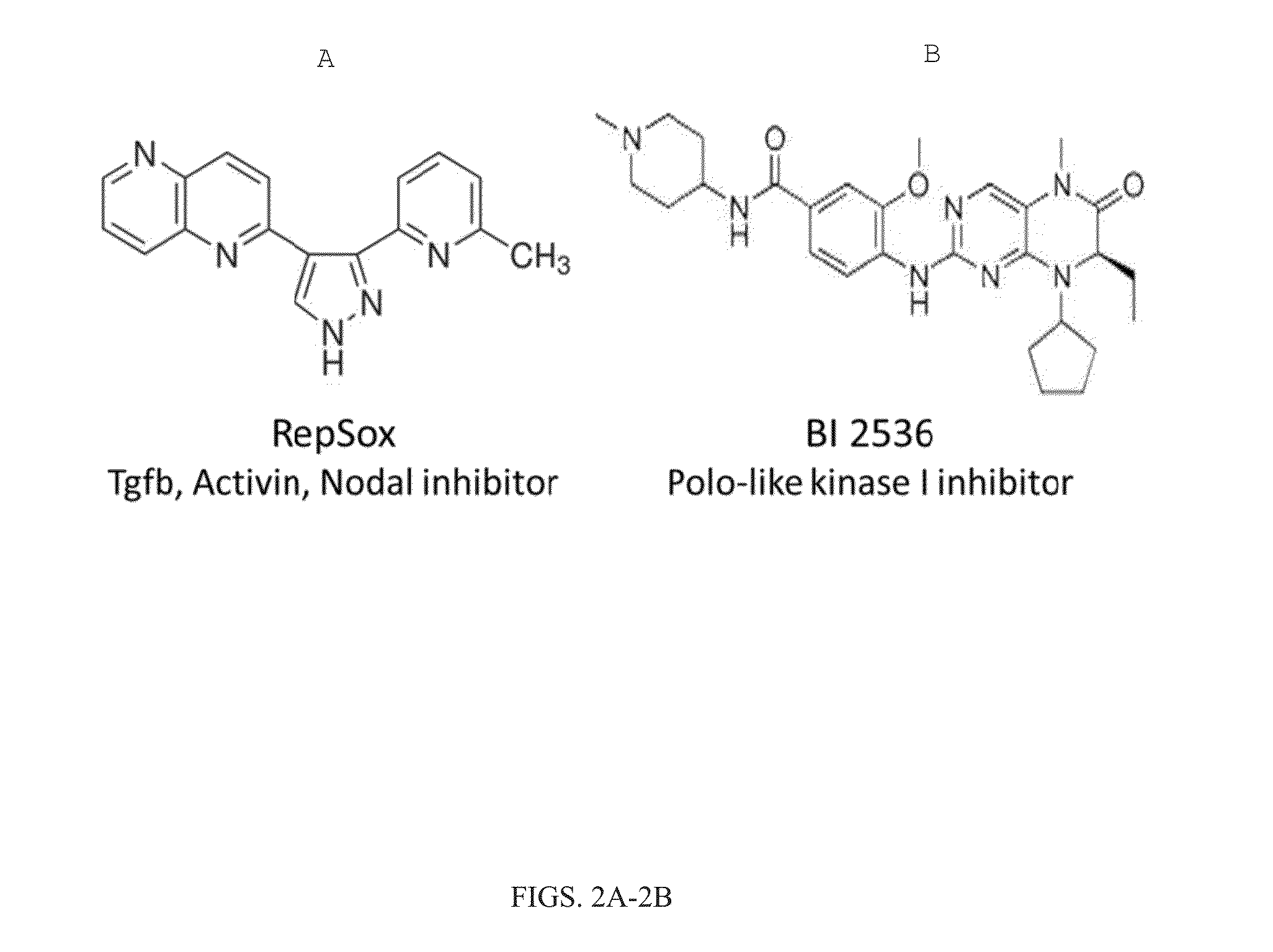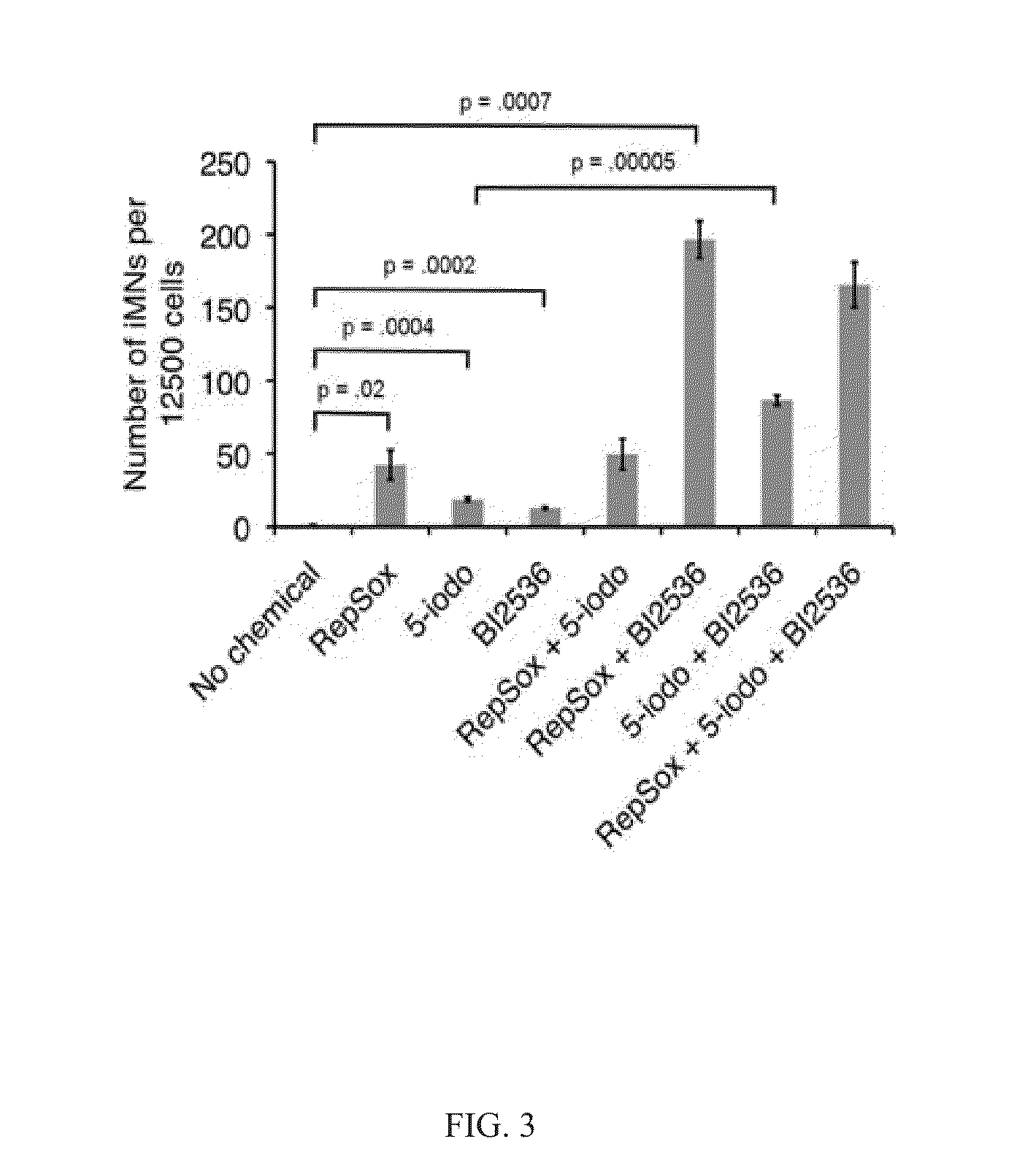Compositions and methods for improving induced neuron generation
a neuron and induced neuron technology, applied in the field of compositions and methods for improving induced neuron generation, can solve the problems of low conversion efficiency and limited utility of this approach, and achieve the effects of improving the survival of intermediates, improving the efficiency of neuron generation, and increasing the efficiency of neuron formation
- Summary
- Abstract
- Description
- Claims
- Application Information
AI Technical Summary
Benefits of technology
Problems solved by technology
Method used
Image
Examples
examples
[0384]The mammalian nervous system comprises many distinct neuronal subtypes, each with its own phenotype and differential sensitivity to degenerative disease. Although specific neuronal types can be isolated from rodents or engineered from stem cells for translational studies, transcription factor mediated reprogramming might provide a more direct route to their generation. Recent studies have demonstrated that the forced expression of select transcription factors is sufficient to convert mouse and human fibroblasts and stem cells directly into a variety of neuronal subtypes. However, the utility of this approach is currently limited by the low efficiency of conversion.
[0385]One potential solution is to identify small molecules that increase induced neuron generation. Such chemicals would enable the generation of large numbers of patient-specific neurons for disease studies and provide insight into the mechanisms that regulate neuronal induction by defined factors.
[0386]To this end...
PUM
| Property | Measurement | Unit |
|---|---|---|
| temperature | aaaaa | aaaaa |
| resting membrane potential | aaaaa | aaaaa |
| resting membrane potential | aaaaa | aaaaa |
Abstract
Description
Claims
Application Information
 Login to View More
Login to View More - R&D
- Intellectual Property
- Life Sciences
- Materials
- Tech Scout
- Unparalleled Data Quality
- Higher Quality Content
- 60% Fewer Hallucinations
Browse by: Latest US Patents, China's latest patents, Technical Efficacy Thesaurus, Application Domain, Technology Topic, Popular Technical Reports.
© 2025 PatSnap. All rights reserved.Legal|Privacy policy|Modern Slavery Act Transparency Statement|Sitemap|About US| Contact US: help@patsnap.com



